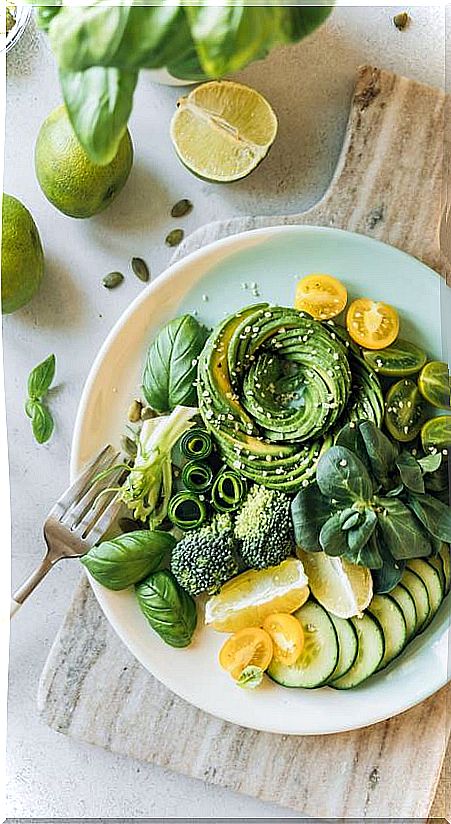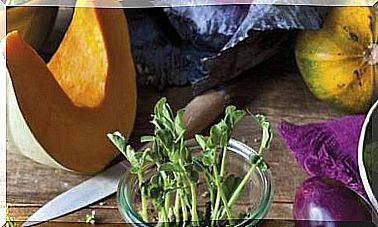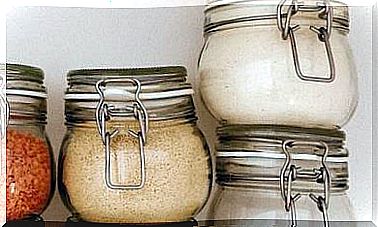The 4 Pillars Of A Balanced Plant-based Diet
Energy, micronutrients, protein and fiber are the 4 foundations on which we can build a balanced vegetarian diet. We explain how to do it.

It is no longer necessary to start an article on vegetarian food justifying its viability or wholesomeness. In 2021 it is taken for granted that any person minimally interested in the subject knows that a vegetarian or vegan diet is fully compatible with good health, in all stages of life and also for athletes. The words are not mine, but the American Academy of Nutrition and Dietetics.
The important thing (as with any other eating pattern, whether it includes foods of animal origin or not) is to know how to organize it in a healthy way.
In this guide we review some key points, or those that tend to raise more questions, such as: Will I get enough protein? Will I have strong bones if I don’t eat dairy? Will I suffer from anemia? Can I follow a weight loss diet if I am a vegan person?
1. Energy
It is a myth to believe that a vegan diet is low in calories by itself. This type of diet can be hypocaloric, normocaloric or hypercaloric depending on the food and the size of the servings that are chosen. Exactly the same as with a traditional diet.
If you need to adjust the calories, it is a good idea to go to a dietician-nutritionist to help you do it in a healthy way, adapted to your needs and without missing nutrients.
The plant-based diet itself neither makes you lose weight nor make you fat: it is possible to gain or lose weight.
Calories in the vegetable diet
Leaving aside the pastries, sweets, soft drinks and other ultra-processed ones (which are already in their vegan version and are just as unhealthy as the traditional ones), there are many healthy vegan foods that are generous in calories and, therefore, energetic :
- Olive oil and all vegetable oils
- Nuts and their derivatives such as nut butters; for example, peanuts and peanut butter
- The seeds
- The coconut
- The chocolate
- All cereals and their derivatives …
But all these foods provide minerals, vitamins and antioxidants.
On the other hand, those foods with a lower energy content, such as most fruits and vegetables, should be the basis of any diet, not just the vegetarian one.
“Good” fat: how to incorporate it into the diet?
It is important that some of the fatty foods chosen provide omega-3s. They are essential for controlling inflammation and for heart and brain health.
You can get the amount you need with:
- a tablespoon of crushed flax or chia seeds
- seven nuts
- two tablespoons of rapeseed oil
Pumpkin seeds, wheat germ or soy also contain them, although in lesser amounts.
Healthy carbohydrates: what are the best foods?
In the plant diet most of the energy comes from foods rich in carbohydrates. It is advisable to choose them well and avoid white flour and sugars.
- Quinoa. It provides 21.3% of carbohydrates and is a good source of quality protein (4%) and fiber (3%). It does not contain gluten. A serving of 150 g (cooked) provides 180 calories.
- Avena. It combines a high proportion of carbohydrates and fiber that provides long-lasting energy, along with B vitamins and minerals such as magnesium, iron and zinc. 50 g of porridge contains 190 calories, 17 g of protein and 11 g of fiber.
- Banana. All fruits, when eaten whole, are adequate sources of carbohydrates. A banana provides 90 calories and 3 g of fiber.
- Potatoes. They are pure energy, along with vitamins (C and group B) and minerals. Steam them to preserve their nutrients as much as possible. If you let them cool in the fridge, part of the carbohydrates will behave as fiber that will feed the microbiota. 150 g provide 125 calories.
- Lentils. Like other legumes, they combine carbohydrates with protein and fiber in optimal proportions. In addition, they are very rich in minerals such as iron or magnesium. 200 g of cooked lentils offer 225 calories, 18 g of protein and 16 g of fiber.
- Rice. In its integral version, carbohydrates are accompanied by good doses of B vitamins, minerals and fiber. 200 g of cooked rice contains 210 calories. Mix it with veggies and some protein and you have a complete plate.
2. Micronutrients
Iron
The prevalence rate of iron deficiency anemia in vegetarians is very similar to that of non-vegetarians. Therefore, a balanced vegetarian diet is adequate to cover iron requirements.
To promote its absorption, you can take into account the following tips:
- Accompany the sources of vegetable iron (legumes, nuts, whole grains, green leafy vegetables) with a source of vitamin C (fresh vegetables, fruit, lemon juice, chopped parsley).
- Do not drink tea or coffee right after main meals, as their tannin content hinders the assimilation of iron.
Omega 3
The recommendations to ensure an adequate supply of omega-3s are simple.
- Avoid using oils rich in omega-6 (corn, sunflower, “vegetable oil” or margarines made with these oils). He prefers extra virgin olive oil.
- Take the equivalent of 2.5 g of ALA (alpha-linoleic acid) every day . For instance:
- 1 teaspoon flax oil
- 1.5 tablespoons flax seeds, crushed
- A handful of walnuts
Iodine
It is advisable to use iodized salt in the diet.
To obtain iodine, it is better not to resort to the usual consumption of seaweed, since sometimes they can contain too high amounts.
Vitamin D
Vitamin D deficiency is common in the general population, so it is also common among vegetarians. It is important to regularly check your levels through analytics and supplement if necessary.
There are vegan vitamin D3 supplements on the market (the most effective form of supplementation), so today meeting your requirements is no problem.
As for the rest of the population, moderate sun exposure is advisable to stimulate the production of this vitamin in the skin.
B12 vitamin
Its supplementation with this vitamin is essential for all people who follow a vegetarian diet.
The recommendation is to take a weekly supplement of 2 mg of cyanocobalamin.
Calcium
When we give up dairy, it is important to ensure the supply of calcium in other ways.
The Recommended Daily Intake of this mineral for men and women over 25 years of age, also in pregnancy and lactation, is 950 mg / day, according to the European Food Safety Authority.
Even so, the recommendations differ between countries (700 mg in the UK, for example), are not adapted to vegetarians, and do not take into account key factors in bone health such as vitamin D, physical activity or sun exposure.
How can I get the calcium I need without dairy?
Very easy: you can cover the daily requirement by resorting to especially rich plant foods.
Take 6 to 8 servings a day between fortified vegetable drinks and foods rich in calcium such as the following:
- ½ glass (120 ml) of enriched vegetable drink.
- 60 g of tofu curdled with calcium salts (or 120 g of tofu curdled with nigari).
- 55 g of almonds (the almond is not only very rich in calcium but also presents it in a good balance with phosphorus).
- 5 figs.
- 3 tablespoons of sesame paste (tahini).
- A vegetable yogurt (125 g) enriched with calcium.
- A plate (240 g) of calcium-rich vegetables (broccoli, kale, collard greens).
- A plate (240 g) of legumes rich in calcium (soybeans, white or black beans).
- 80 g of whole wheat bread.
We show you how by including some of these foods in your daily meals you easily meet your needs.
- Breakfast. A whole wheat toast with tahini and jam (2 servings).
- Midmorning. An enriched vegetable drink (1 serving).
- Afternoon snack. 30 g of nuts and 2-3 dried figs (1 serving). Meal. A plate of broccoli with legumes (2 servings).
- Dinner. 60 g of tofu and 240 g vegetables (2 servings).
As with all nutrients, you don’t have to rely on one food or a few to get the amount you need. Foods that provide small amounts also add up.
Magnesium
It is essential in many metabolic processes : for muscular and nervous function, for immunity, for bone and cardiovascular health. It also participates in protein synthesis, energy production, DNA synthesis and in the functioning of some neurotransmitters.
Although it is one of the most popular supplements, people who follow a vegan diet do not need it, as it is found in abundance in dark green leafy vegetables, legumes, nuts and seeds, or whole grains.
With a vegan diet, there is no difficulty in getting the 350 mg of magnesium we need per day.
3. Proteins
It is usual that the first concern of people who decide to eat a vegetarian or vegan diet is to get enough protein. However, this does not represent a difficulty because a healthy vegetarian diet offers it.
How much protein do I need daily?
According to the World Health Organization, a healthy adult without special needs covers his protein requirements with 0.83 g of protein per kilo of weight per day.
Considering the lower digestibility of vegetable proteins (except for soybeans and its derivatives), we could increase the contribution to 1-1.1 g / kg / day, which, in the case of a person of, for example, 65 kg, would translate into 65-71.5 g / day.
If the needs are above the average, as in athletes, pregnant women or those who breastfeed, the servings should also be higher.
What vegetable proteins are of quality?
In a vegan diet, they are quality protein sources:
- legumes
- the tofu
- textured soybeans and soy derivatives in general (drink, yogurt, Heura …)
- nuts and seeds
- brewer’s yeast
- to a lesser extent, seitan and cereals
Processed vegetables type “sausage” or “hamburger” should not be of habitual consumption because they are usually rich in starch and their protein value is not really high. In addition, they tend to contain fats of dubious quality and significant amounts of salt.
What are the best vegetable protein combinations and how to prepare them?
Classic dietetics maintains certain myths about the quality of vegetable proteins and the need to combine them in the same dish to obtain a complete protein intake.
This mix actually occurs throughout the day, but it helps to know the combinations that “create” complete proteins:
- Legumes + cereals: lentils with rice, hummus spread on bread, corn tortillas filled with beans or soy milk with breakfast cereals.
- Legumes + nuts : bean salad with walnuts, tofu and dried fruit burgers, or chickpeas with spinach, raisins and pine nuts.
- Cereals + nuts : fried rice with cashews, walnut bread, almond cakes, oatmeal cookies and nuts …
Taken in this way, vegetable proteins are as complete as animal proteins, and the other nutrients that accompany them are also interesting from the point of view of nutritional quality.
But beware! It is not true that only by combining them we obtain “complete proteins”. There are plant foods that already have complete proteins on their own (with all the essential amino acids in adequate amounts), such as soybeans and their derivatives, chickpeas, some beans, pistachios and quinoa, to name just a few foods.
With imagination, the combination options are endless. In addition, to all these dishes we can add seeds (sesame, flax, sunflower, pumpkin …), which also provide their protein dose.
In addition, it is not necessary that we complement the proteins neither in the same dish nor in the same meal. To take a healthy diet that includes foods from all groups is sufficient. Without obsessing. In no way should we be aware of adding the grams consumed.
A balanced vegetarian diet that includes daily servings of cereals, nuts, and legumes easily meets protein requirements. Simply include a serving of quality protein food in each main intake.
What are the plant foods with the most protein?
According to the amount of protein per 100 g:
- Textured soy: 50.7 g
- Peanut: 23.7 g
- Almond: 21.2 g
- Seitan: 21.2 g
- Flaked oats: 17.3 g
- Cooked soybeans: 16.6 g
- Walnut: 15.2 g
- Hazelnut: 15 g
- Tofu: 8-12 g
- Bread: 9-13 g
- Cooked lentil: 9 g
- Cooked chickpea: 8.9 g
- Cooked beans: 8.5 g
- Cooked pasta: 5.3 g
- Soy yogurt: 4.6 g
- Cooked quinoa: 4.4 g
- Cooked amaranth: 3.8 g
- Soy drink: 3 g
- Rice: 2.3 g
Tofu, in addition to being a good source of protein, provides calcium, polyunsaturated fats and isoflavones.
A vegetable menu full of protein
The following menu provides more than enough all the proteins that are needed per day (in total, 82.5 g):
- Breakfast. 35 g of rolled oats and 250 ml of soy drink. Fruit.
- Mid morning. 60 g of bread with tomato, oil and avocado.
- Food. 200 g of cooked chickpeas. Salad. A bowl of rice (120 g cooked). Fruit.
- Snack. 30 g of almonds and a banana. An infusion with soy drink (200 ml).
- Dinner. 150 g of grilled tofu, 100 g of cooked pasta and salad with 15 g of seeds. A soy yogurt.
4. Fiber
Fiber is a component of most plant foods that performs essential functions in the digestive process.
It is essential, for example, for the microbiota to enjoy good health, which is almost equivalent to enjoying general well – being, since intestinal bacteria influence the assimilation of nutrients, glucose and fat levels in the blood, the immune response and many other aspects of how the body works.
With an entirely vegetable diet, without ultra-processed or refined products, it is easy to reach the minimum fiber figures, which are around 25-38 grams per day.
The types of fiber: what function do they serve?
Food provides two types of fiber. The non-fermentable one facilitates intestinal transit, and the fermentable one feeds the microbiota.
When planning the diet, it is important to get all the necessary fiber and that, in addition, it is of the right type.
Some of the fermentable fiber is found in the retrograde resistant starch provided by rice, potatoes, sweet potatoes, yuccas, and other tubers after they have been cooked and chilled for a few hours. These foods are still rich in carbohydrates, but the proportion that behaves as fiber increases after cooling.
Other foods that provide fermentable fiber are legumes, vegetables, seeds, oats, and fruits.
On the other hand, in addition to fiber, to enrich and take care of the microbiota, it is advisable to include fermented foods in the diet : yogurts, kombucha, miso and fermented vegetables such as sauerkraut (fermented cabbage in brine) or kimchi (Chinese cabbage, peppers, chili) . Eating at least one fermented food a day is not a bad idea.








